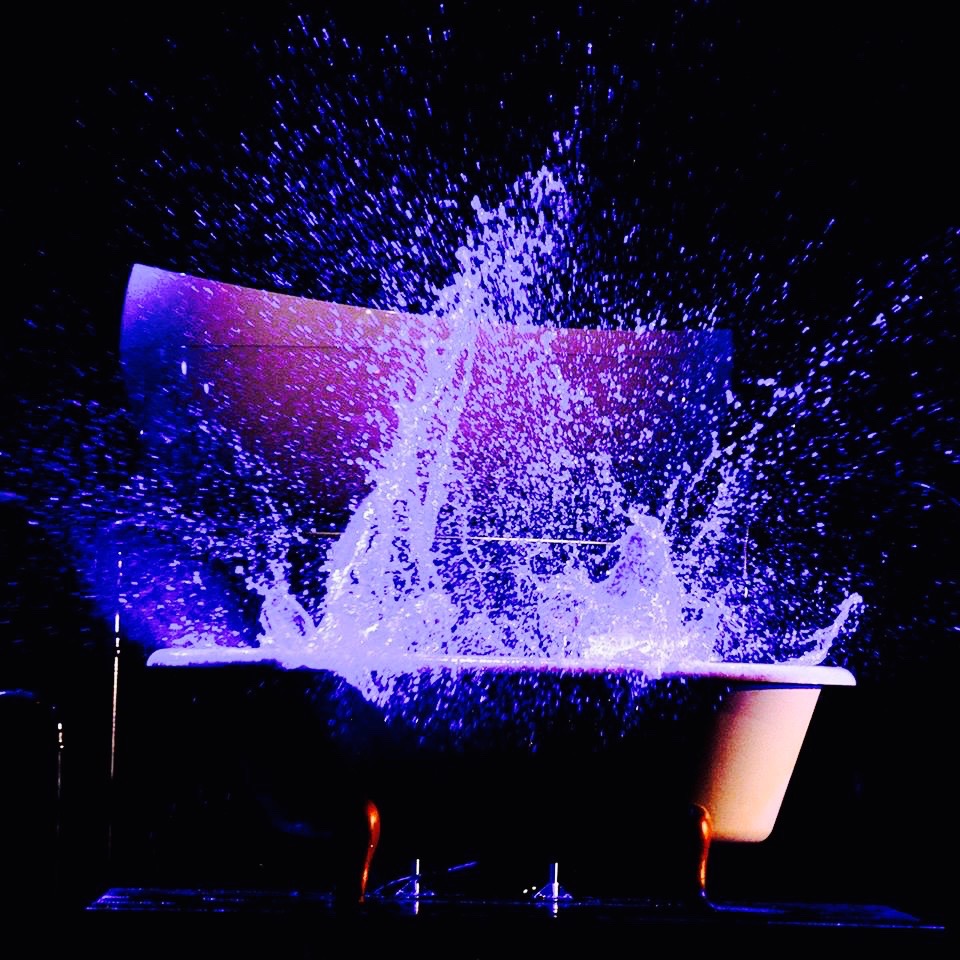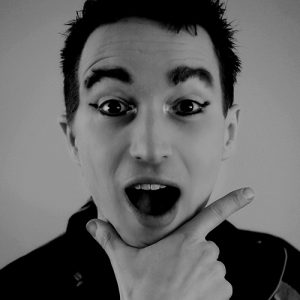
November 12th 2017, Broadway Avenue, New York City.
“Just look at the set! And that’s only on my phone, picture the real thing now!”
As I was standing in front of the Palace Theatre on Times Square, debating on whether or not I’d be spending that night’s budget on Sponge Bob Square Pants – The Musical, a show based on a cartoon that I’ve never watched, a random person who had seen the matinée showed me a picture of the elaborate and eccentric set that made a strong enough impression on me that I bought a ticket right there and then.
I hadn’t researched nor listened to the show’s soundtrack, didn’t know who the production featured, but those pipes, hoops and tubes caught my attention with their original, somewhat futuristic look and I wanted to know the story hosted by such a playground.
What kind of spell did this musical’s set designer use on me and on that stranger’s phone to sell me a show I knew nothing about?
If an image is worth a thousand words, how about a full set?
“A LOT!” according to Danielle Drobny who, with three decades of drawing, picturing, designing and retouching under her tool belt, explains that the set has to sell it, without selling it all. “It is the first thing that the audience sees as they are walking into the room or as the curtain goes up. It is background information to what is about to happen in front of their very eyes and, as a set designer, I want to contribute to the atmosphere in the room, feed them as much information as I can, without letting my designs give away every plot twist and turn!”
The deception that this German artist felt as a little girl when the elaborate sets from those ballets shown on TV were nowhere to be found on her first recital’s stage might have contributed to a career in set design, if only to avoid further deception and childhood traumas to other artists! At 12 years old, unimpressed by what fashion had to offer in her native South Germany, she started making her own clothes and show dresses.
Her debut as costume designer came when people started requesting “Drobny Originals” after noticing her innovative and creative approach.
A hop, a skip and a few dance steps later, she was at the Stuttgart Opera House, not on stage, but as part of the crew, trading dancing and performing for building props, fixing set pieces, painting and sewing.
Feeling that creativity had been lacking on stage for a while and unsure of what to do next to express herself in the spotlights, Danielle joined Acheim Freyer’s team, the big operatic productions set designer at the time, who allowed her to transition from full-time dancer to designer in his classroom.
“Your designs aren’t the show, they are not hanging in an art gallery, believe it or not, but there will be people moving and performing in front of the set!” she says with a smile and a dramatic look on her face. “No designer can afford to be self-centred. Light, costume, set and sound, we are all there for the director, the performers and each other: knowing and respecting the director’s vision, being aware of what the performers do and need and, finally, thinking of each creator’s craft to complete and complement each other. It really isn’t and cannot only be about colours and props!”
Humility and heart both define this creative woman as well as the qualities that she’s looking for in designers and, since good things come in threes, “Hard hands!” will complete her 3-H list in a moment of laughter!
30 years into it, one question remains, the first one that needs to be answered when entering a new production: “What’s the destination?” Knowing where the director wants to go and establishing clear communication with the ship’s captain will determine if the show’s path will be paved with obstacles or aids, give the creation its tone and confirm that every contributor is sailing in the same direction. “Next comes the mood. I need it for every scene and for the whole as it will affect each of my decisions behind the computer and drawing board.
Being very present in the rehearsal room will also allow me to feel it all and to get a better understanding of the creation’s and cast’s personalities.
Finding the right language to converse with the performers in this somewhat organized chaos should be a top priority for every designer: by knowing what they want and how we can collaborate, frustrations and deceptions will be avoided and both sides will be more likely to make compromises until it all comes together when that light hits the stage, which is so exciting! When I see those people having the time of their life, working their butts off and displaying the same passion that I have for the arts, my eyes are growing bigger and bigger and I just want to keep on giving!” she concluded on a slightly higher note!
With her voice back to normal, but with a hint of excitement still glowing in the corner of her eye, Danielle admits that before this magical moment where everything just falls into place, despite all the difficulties encountered moving the lights from stage left to right, making the turntable go around and that magic carpet soar through the air with an exhilarating adrenaline rush, challenges and unplanned changes will hit each set and every designer, regardless of how prepared they are. Great ideas can be piling up, budgets might have been cleared by the producers, but having to come up with a plan B faster than it takes to drill a hole in that box that contains the wrong order will be a necessity.
“You can plan and prep as long as you want, but there are so many elements involved, therefore being fast and VERY flexible will ultimately save your production where your plan and customer service won’t! Go back to the story, look at props, the material and reflect on them, on what you’ve got. Paper fans were not the plan, but they produce a different sound and seeing how the light reflects on them as opposed to fabric can lead to your next great idea.”
In spite of being convinced that creators should try anything and experiment everything to keep on learning and to avoid repeating themselves, this set designer has always been more interested in the more physical shows, from her very first creation for the Chamäleon Theatre in Berlin, which mostly features acrobats and other physical actors, to Kings & Queens for Palazzo Dinner-Shows, challenges and inspiration have always felt more present in those environments where requests are as present as restrictions and where “the stage is always too small!” She bursts out laughing before explaining that floor modifications, the use of an additional motor that must be shipped from abroad, heavy props, special mats and how they can be hidden are just a few elements that are always on her mind before she even starts imagining the set since that once empty stage might already be well occupied before the very first day of rehearsals!
As for the recognition that she and her colleagues are getting for their creative expertise, Danielle will first applaud the Tony Awards committee’s decision to divide the “Best Scenic Design” in two categories, Play and Musical, in 2005, considering that these productions have their own set of rules, requests and restrictions. As for the “to air or not to air” debate regarding some categories, a clear and strong “It’s not fair!” spontaneously comes out of her mouth before reminding me how much a set can do for a show. After all it was David Zinn’s Tony-winning design that convinced me to buy a ticket on November 12th 2017! The set really does sell it!
Tech Table: We Need A New Design
How To Build Up A Memorable Experience For Your Audience


Impassioned by performing arts, Martin Frenette started intensive dance training at a very young age before trading pliés and barres for ropes and somersaults at Montreal's National Circus School. He has spent a decade in Europe, performing in various productions. Circus Monti, Chamäleon Theater, Wintergarten Varieté, Cirque Bouffon, GOP Show Concepts, and the Friedrichsbau Varieté have allowed him to grow artistically and humanly. Martin has also invested time working as an artistic consultant, director, and choreographer for both circus and dance projects. He enjoys splitting his time between Europe, Canada, and the US, working on stage and creating for others. Writing has always been a big passion of his and he's thrilled to share his views on shows, the stage, and what's going on behind the scenes with other performing arts enthusiasts!
Read Full Profile© 2021 TheatreArtLife. All rights reserved.

Thank you so much for reading, but you have now reached your free article limit for this month.
Our contributors are currently writing more articles for you to enjoy.
To keep reading, all you have to do is become a subscriber and then you can read unlimited articles anytime.
Your investment will help us continue to ignite connections across the globe in live entertainment and build this community for industry professionals.